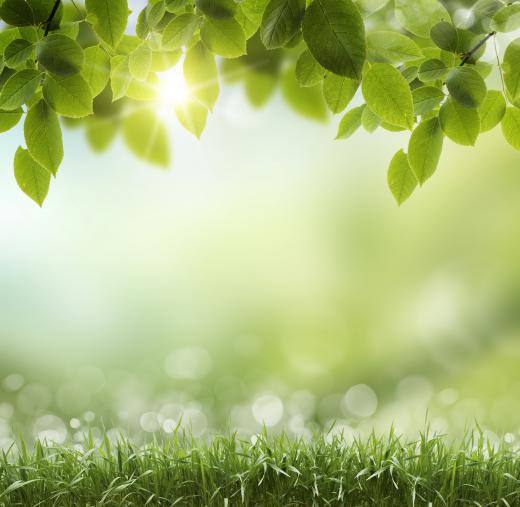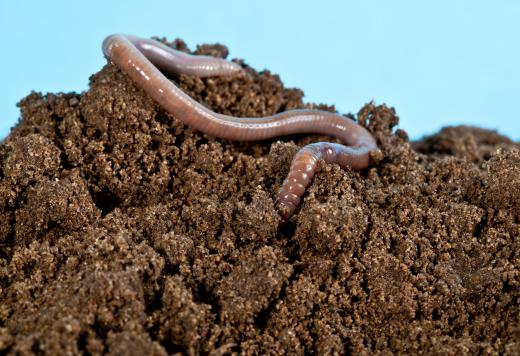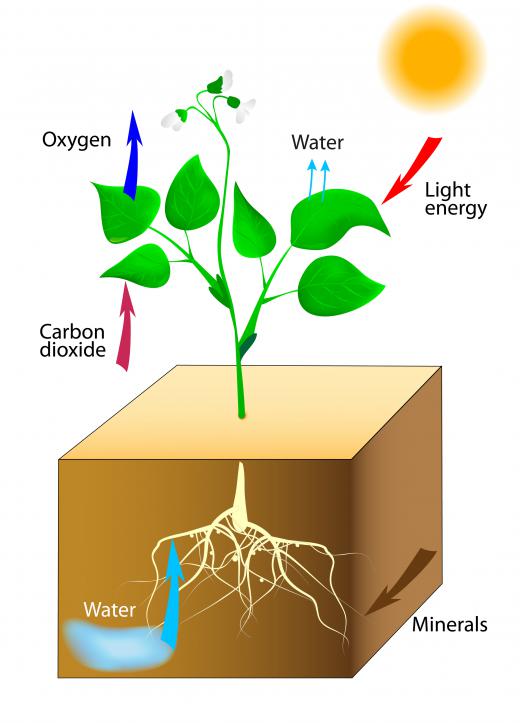What is the Nutrient Cycle?
In biology, the nutrient cycle is a concept that describes how nutrients move from the physical environment into living organisms and subsequently are recycled back to the physical environment. This circular movement of nutrients is essential to any given ecosystem, and it must be balanced and stable for the system to be maintained. In many cases, human activities have had a major impact on these processes, resulting in adverse effects. There are many different nutrient cycles, each with its own particular pathways, but perhaps the most important are those involving the elements carbon, oxygen, nitrogen, and phosphorus.
The Carbon Cycle

This nutrient cycle begins with photosynthesis, the process by which plants, algae, and some bacteria use energy from sunlight to combine carbon dioxide (CO2) from the atmosphere and water to form sugars, starch, fats, proteins, and other compounds that they use to build cells or store as food. In this way, plants remove carbon from the atmosphere and store it, making it available to herbivores that eat the plants. Herbivores use some of the carbon they consume to build and repair cells, so that it is stored in their bodies. The rest is used to provide energy: it is combined with oxygen from the air to form CO2, which is then exhaled, returning the carbon directly to the atmosphere.

The carbon stored in the body of a herbivore, such as a deer, can be recycled when the animal dies. Alternatively, the animal may be killed and eaten by a carnivore, such as a wolf, in which case recycling will take place when the carnivore dies. Dead plant and animal matter is decomposed by other organisms, such as fungi and bacteria. This process releases carbon, in the form of carbon dioxide, back into the atmosphere.

There are a number of complications within this general process. For example, dead organic matter can sometimes be buried under sediment, rendering the carbon unavailable to living organisms. This buried material has formed deposits of coal and oil, which humans are now exploiting as fossil fuels. The combustion of these compounds forms carbon dioxide, which is released into the atmosphere. There is a wide consensus among scientists that increasing CO2 levels resulting from the burning of fossil fuels is changing Earth's climate on a global scale.

Carbon can also be locked up in rocks when carbon dioxide dissolves in water. Some types of marine organisms can combine dissolved carbon dioxide with calcium to build shells consisting of calcium carbonate. When these organisms die, the shells accumulate as sediment, eventually forming limestone rock. Over vast timescales, limestone can be uplifted to the surface by geological processes, where acidic water can react with it to release CO2 back into the atmosphere.
The Oxygen Cycle

This cycle is closely related to the carbon cycle and starts in the same place: photosynthesis, which releases oxygen into the air. This, in turn, is absorbed by oxygen-breathing organisms, which combine it with carbon and release carbon dioxide into the atmosphere. The CO2 is then used in photosynthesis to release oxygen again. Carbon dioxide from other sources, such as the decomposition of dead organic material and the burning of fossil fuels, is also used in photosynthesis, producing oxygen.
The Nitrogen Cycle

Nitrogen is an essential element for all known life forms, and it is required to form amino acids, proteins, and DNA. Although 78% of the Earth’s atmosphere consists of this element, it cannot be used directly by plants in this form. Molecules of the gas consist of two atoms held together by a very strong triple bond, which makes it very difficult for it to react with other elements. Nevertheless, nitrogen has its own nutrient cycle.
There are two main ways in which this element can become available to living organisms. Normally, a lot of energy is required to break the bonds between the atoms in a nitrogen molecule. This energy can come from lightning, which causes some nitrogen to combine with oxygen, forming nitrogen oxides. These can dissolve in rainwater to form very dilute nitric acid, which reacts with minerals in soil to form nitrates. Nitrates are soluble in water and can easily be absorbed by plants.
Most of the nitrogen in living organisms comes from a process known as nitrogen fixation. This involves the conversion of atmospheric nitrogen in soils into ammonia by various types of bacteria and some algae. One such group of bacteria, called Rhizobium, forms nodules in the roots of peas and beans. For this reason, these plants are often grown as crops by farmers when the soil needs to be enriched with this element.
Ammonia generated in this way is then converted by other types of bacteria into nitrates, which are absorbed by plants. Another process, called denitrification, returns nitrogen gas to the atmosphere. Again, this is performed by bacteria, which reduce nitrates in the soil to nitrogen.
Human beings have had a significant impact on the nitrogen cycle. Since nitrates are very soluble in water, they can be rapidly removed from the soil by rain. Where crops are grown intensively, the lost nitrates often have to be replaced by nitrate fertilizers. These compounds are produced industrially by processes that first combines atmospheric nitrogen with hydrogen to form ammonia then combines this with oxygen to form nitric acid, which is used to manufacture fertilizers.
The Phosphorus Cycle
Like nitrogen, this element is an essential part of DNA. It is also required for the production of adenosine triphosphate (ATP), a compound that cells use for energy. The main natural source of phosphorus is from rocks. The element enters water and soil in the form of phosphates through erosion and weathering, and it is taken up by plants. It then progresses through the food chain via herbivores and carnivores, returning to the soil when these organisms die.
Phosphates can be washed out of the soil by rainwater, accumulating in lakes and rivers, where some of it is used by aquatic plants and other organisms. Some of the phosphate, however, undergoes chemical reactions that form insoluble compounds that are deposited as sediments. These eventually form rock and, in this way, phosphorus can be locked up for very long periods — possibly tens or hundreds of millions of years. Eventually, geological processes may uplift this rock, allowing erosion and weathering to return it to living organisms.
In cultivated areas, as with nitrogen, phosphorus lost from the soil often needs to be replaced with phosphate fertilizers to allow agriculture to continue to be profitable. These fertilizers are mainly made from phosphate rocks such as apatite. The use of animal manure in crop fields is another example of the addition of phosphorus to the soil by man. In some cases, excess phosphate is washed into rivers and lakes. From here, it may be deposited in sediments, but some may remain dissolved, leading to excessive growth of algae.
AS FEATURED ON:
AS FEATURED ON:
















Discussion Comments
Another cycle is phosphorus nutrient cycle. Phosphates are mostly found in rocks and slowly they dissolve and enter into the water systems, such as lakes or rivers. Eventually, they will get into animal and plant life and than back into the earth.
I remember a funny but very good song a park ranger thought us while sitting around the fire at a campground in a national park. It was all about the nutrient cycle and decomposition. I wish I could remember how it goes.
I liked the information but is there any for grade 6? Because I am having problems understanding more about the topic. Sorry for the disturbance.
Very informative article!!
Another cycle is phosphorus nutrient cycle. Phosphates are mostly found in rocks and slowly they dissolve and enter into the water systems, such as lakes or rivers.
Eventually they will get into animal and plant life and than back into the earth.
I remember a funny but very good song a park ranger thought us while sitting around the fire at a campground in a national park.
It was all about the nutrient cycle and decomposition. I wish I remember how it goes.
Post your comments